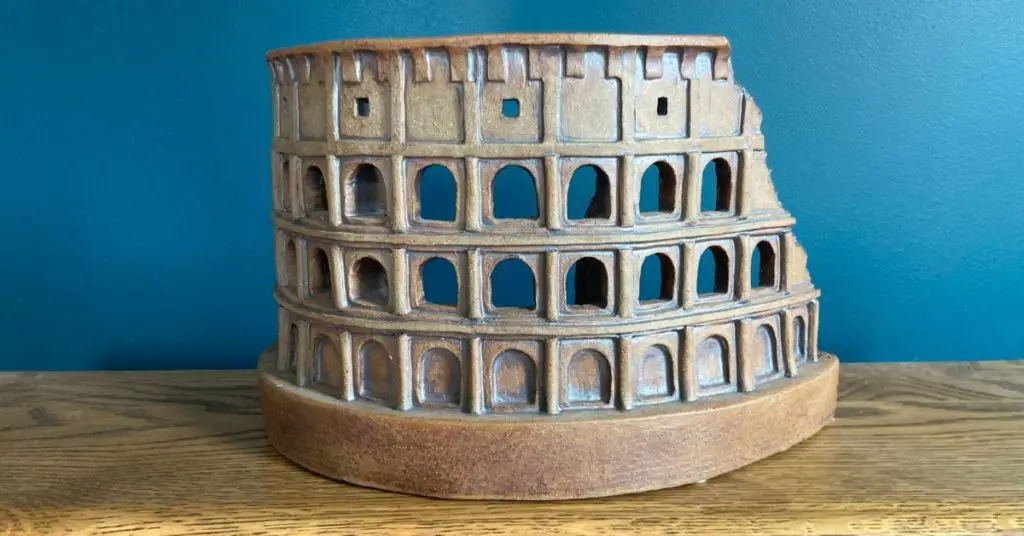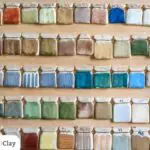So you’ve heard the term: Handbuilding pottery. What is it and what should you know about it?
Handbuilding pottery is a great way to get started with pottery. In this article, we’ll explore what handbuilding is, how it got started so many years ago, and the different techniques that fall under the hand built category.
I’ll end the article with project ideas to get you going on your pottery journey. So stick around!
What is handbuilding pottery?
Handbuilding is a technique of making ceramics where you form clay into a pot or vessel with only your hands, simple tools, and a slab of clay.
Before the pottery wheel, ceramicists made forms using palm, fingers, and hand tools. The wheel made possible a potter’s ability to form the clay in advanced ways. Still, many artists see handbuilding as a way to make unique designs.
What’s great about handbuilding is that potters with a range of skill levels can do this. I’ve been an art teacher for a decade. My middle school-aged students aren’t expert potters who can make complex forms and large pieces. But they can make a simple mug or shallow dish. I’ve found the potter’s wheel is much more challenging for younger artists.
A Brief History of Hand Built Pottery
Ceramics is one of the oldest known art forms. Pottery was an early human invention that played a functional and artistic role in ancient life. And handbuilding is the earliest known method of creating ceramics.
The earliest known ceramic piece is a figurine called Venus of Dolní Věstonice. Found in modern-day Czech Republic, the ancient pottery statuette is nearly 30,000 years old.
10,000 years later (18,000 – 17,000 BCE), hand-built pots were being formed in China. Archeologists believe these successes in China spread to Japan and Russia. Archeologists continue to find more ancient and inventive hand-built ceramic pieces. Most common are containers for food and water, building materials, and weaponry.
That’s what’s great about handbuilding: Someone made a figurine 30,000 years ago with limited pottery tools and no proper kiln. You don’t need special tools. You don’t need expensive kilns. You just need a lump of clay to make clay forms and some imagination.
The best clay for handbuilding pottery
Choosing the right clay for handbuilding pottery can be a daunting task. What type of clay is best for a particular project? What are the pros and cons of each type? In this section, will outline the 4 types of clay and recommend the best for handbuilding pottery.
Porcelain
Porcelain is soft which makes it easier to center if you use are throwing on a wheel. It also has more clay particles in the body. That means you can pull it and stretch it. These properties allow it to be used with thin and translucent shapes.
But porcelain can be FRUSTRATING!
It requires a lot of water. With all the added water, porcelain has a tendency to become soft and collapse. I’d be more likely to give up if using porcelain for a handbuilding project as a beginner.
Stoneware
Same as earthenware, stoneware is a plastic, cooperative clay. It’s easy to shape and form with the material. Unlike earthenware, stoneware is nonporous after it’s fired. You can store liquids without firing. Plus, stoneware is a sturdier material than its porcelain and earthenware counterparts.
Stoneware is a fine choice for your next handbuilding project, but it’s not our suggestion if you have your pick of clay. It’s not as plastic as earthenware which means it’s more challenging to form.
Earthenware (Winner!)
Earthenware clay is the best clay to use for common handbuilding techniques. It’s also plastic meaning earthenware is a cooperative material. The more plastic clay is, the easier it is to shape. And with earthenware, the clay will hold its shape after being formed. This can be quite helpful to someone new at pottery and who is taking their time.
How do you prepare clay for handbuilding?
Prepare the clay for your project with wedging. Clay can dry out between sessions. And tiny air pockets can appear when mixing clay.
Wedging is the practice of kneading the clay. This softens the clay, eliminates air bubbles, and distributes the moisture evenly.
Handbuilding techniques
There are three basic techniques of handbuilding in ceramics:
- Pinching pots
- Coiled pots
- Slab pots
Pinching pots
Pinching pots is one of the common hand building techniques for someone making pottery for the first time. The pinching technique calls for a potter to shape the clay by pinching around the edges into common forms.
Starting with a ball of clay, indent the material with your thumb. Then, press and pinches around the edges shaping the pot into a uniform thickness. These ceramic pieces are often smaller because of the delicate nature of the pinch pot method.
Still curious? Click here to learn all about handbuilding pinch pots.
Coiled pots
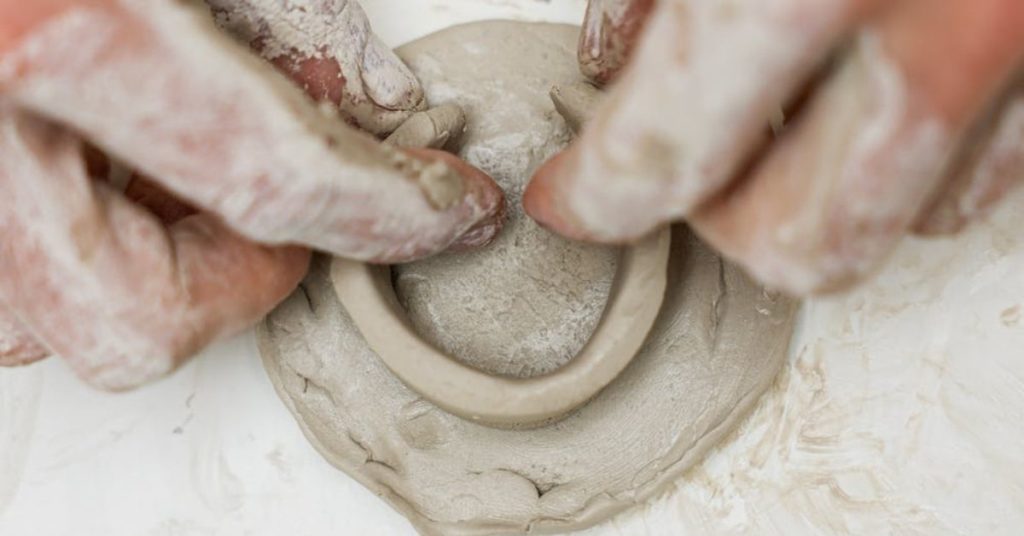
Coiled pots are stips of clayed rolled into a rounded form and stacked into the form of a pot. Think of how bricklayers build a structure. The potter then has the option to keep the ribbed look or to even out the exterior for a smoother texture.
Most pieces from ancient times used the coil pottery technique because of its simplicity. You don’t need tools for handbuilding to create coiled pots. But there are a few basic items that could help. A toolset like this linked option from Amazon covers most everything.
Still curious? Click here to learn all about handbuilding coiled pots.
Slab pots
In contrast to pottery’s typical round shape, a slab pot is a much more angular or boxy piece. It can be a method of creating beautifully unique ceramic art pieces. I have two favorite artists who do a lot with slab building techniques. Click on the following links to check out some of their marvelous works.
You start the slab technique by creating the “walls” of a vessel out of many clay slab. Then, slip and score the clay where the clay walls will come together.
- Scoring is notching marks along the sides of the material that will be pressed together.
- The “slip” part functions as glue. It’s made from a slurry, or distilled clay, and is brushed on the surface of the joint to bind two pieces together.
It does help to have slab rollers and a scoring tool when handbuilding slab pots. Though, you can use a kitchen rolling pin and a paper clip in a bind.
Still curious? Click here to learn about this handbuilding technique – slab pottery.
How to learn Handbuilding
My recommendation is… do it. Stop watching the videos, reading articles, making plans, and setting appointments. The only way you learn something so tactile as handbuilding is to do.
There are two ways I would go about learning the ins and outs of handbuilding as you practice it. The first is finding free and paid online resources that talk through the finer points of handbuilding techniques. Here are three options to get you started.
- [Free] Pottery To The People YouTube Channel
- [Paid] Handbuilding masterclass with Kate Malone
- [Paid] Handbuilding Pottery for Beginners with Antoinette Badenhorst
You can also find classes in your area at pottery studios. Simply Google “pottery classes near me” or “handbuilding pottery classes near me” for a more focused search. Check out the various ceramic studios and what they offer.
It’s a great way to meet other potters and support local artists, too.
Handbuilding pottery ideas (cool projects)
So now you know all about handbuilding. And I wanted to give you three ideas for ceramic projects. But first I wanted to show off one of my proudest works that I made in college.
Kristen’s favorite handbuilding project: the Colosseum
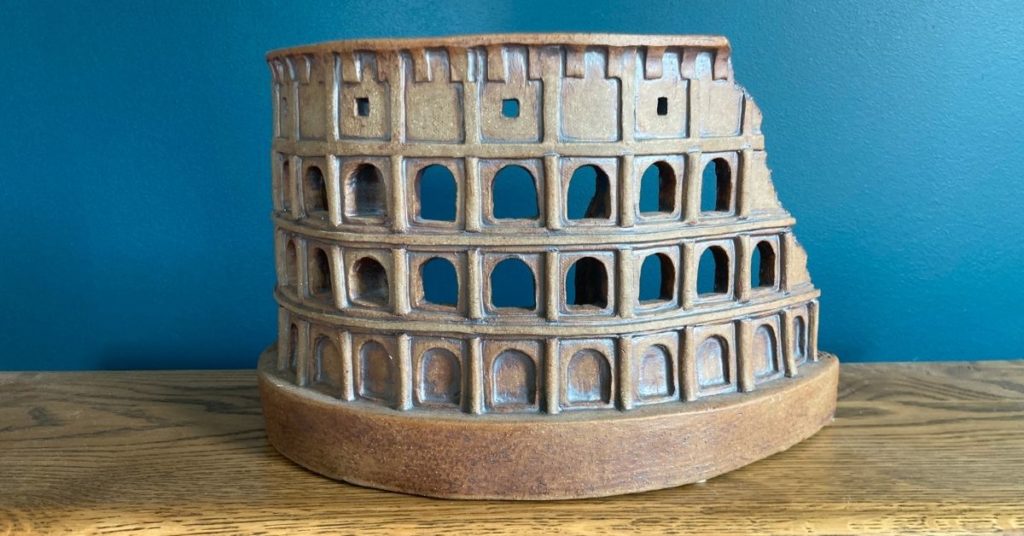
I have tried my fair share of handbuilding ceramics and this is by far my favorite piece. I loved making this handbuilding project on the coliseum. I studied the coliseum SO much. I know that place inside and out. That’s one of the great things about making art – you notice all the little stuff about your subject.
I was lucky enough to visit Rome and see the colosseum just after college! What an amazing experience.
Coffee Mug
A hand-built coffee mug is an excellent starting project. You’re reminded each morning that you created an amazing handmade piece when drinking your morning cup. Or gift it to a loved one! Josh loves his coiled mug Kristen made him early in their relationship.
Try making a pinch pot coffee mug like this example from Kristen.
Slab built planters
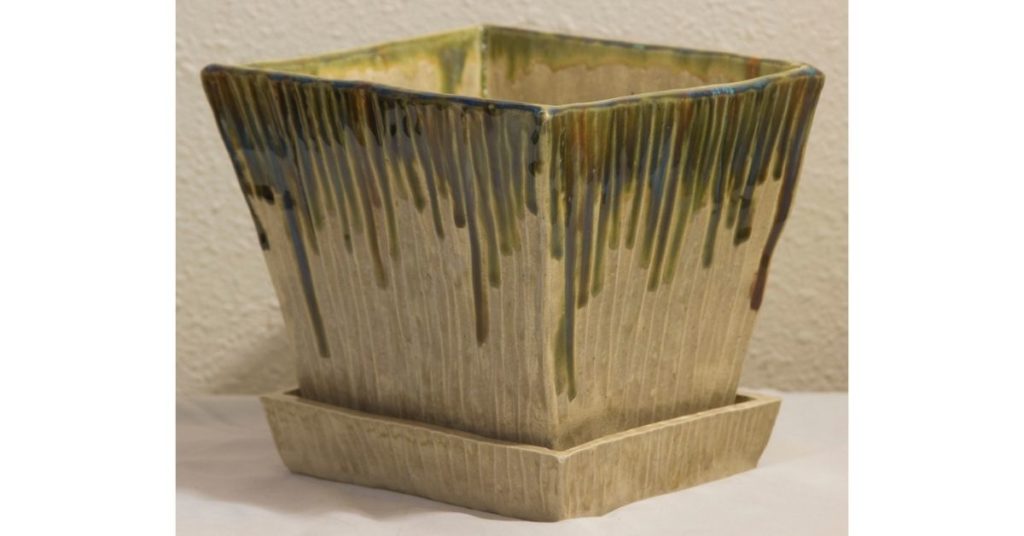
Here’s one of the functional pottery projects: Ceramics is a great way to spruce up your garden. And slab construction structures pair well with planters. It’s one of those You can make these using earthenware clay for a nice terracotta color that fits well in a garden or on your porch.
Try creating a slab built planter like this linked beautiful example from Slip and Weld on Etsy.
A spoon rest
Keep your counters clean when cooking with a spoon rest YOU make. Plus, a spoon rest is hard to mess up. So it’s a great starter project!
Here’s a wonderful example of Andrea Akerib Pottery making a hand-built spoon rest on YouTube.
Looking for more ideas? Check out our article “21 pottery ideas for beginners.”
Conclusion
In conclusion, handbuilding pottery is an age-old technique that is still popular today. It is a great way to create unique pieces of art, and it is a fun activity for both beginners and experts without the requirement of a potter’s wheel. So if you are interested in learning more about handbuilding or want to give it a try, be sure to check out some of the resources listed in this article.
If you have any questions or think I missed something, please let me know! Leave a comment or contact us directly at hello@wheelandclay.com.
More posts on handbuilding pottery
Handbuilding pottery – coiled pots
Slab pottery 101 – a handbuilding technique

